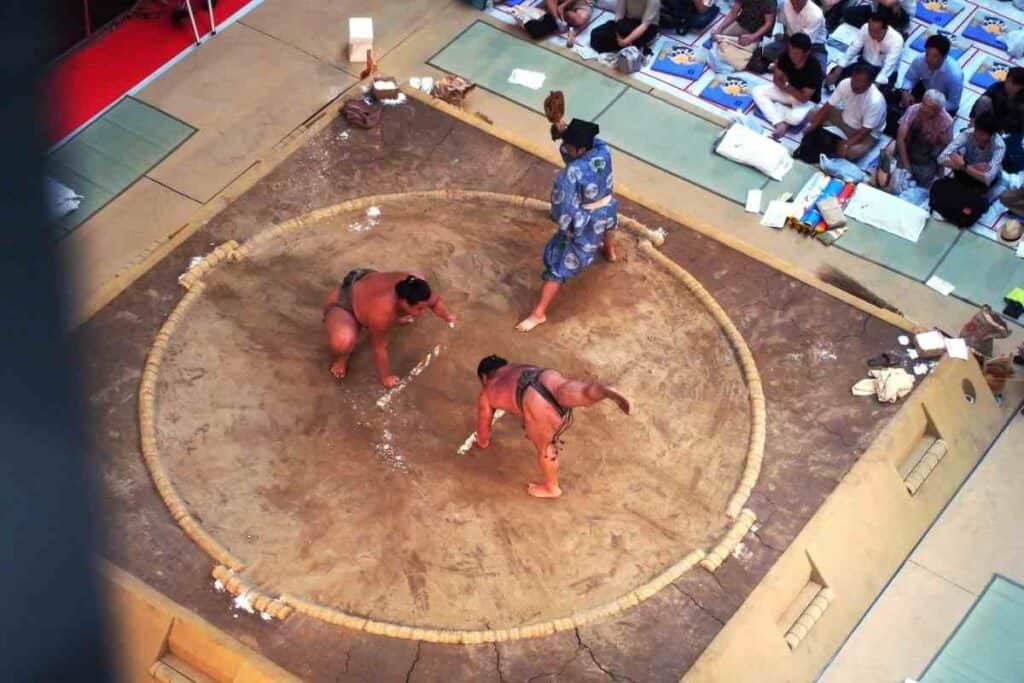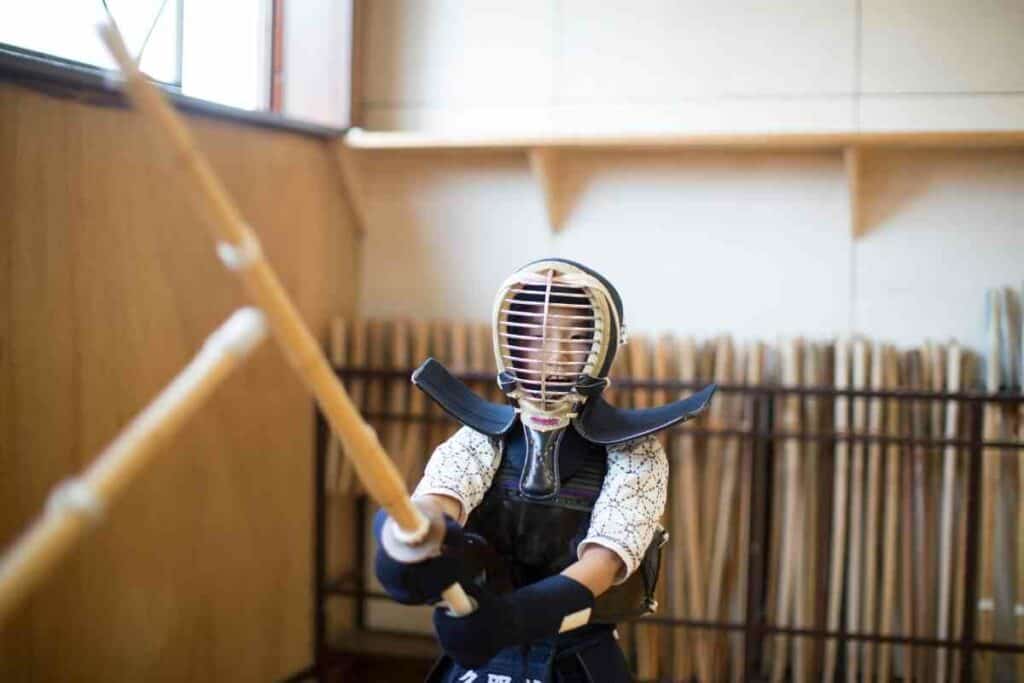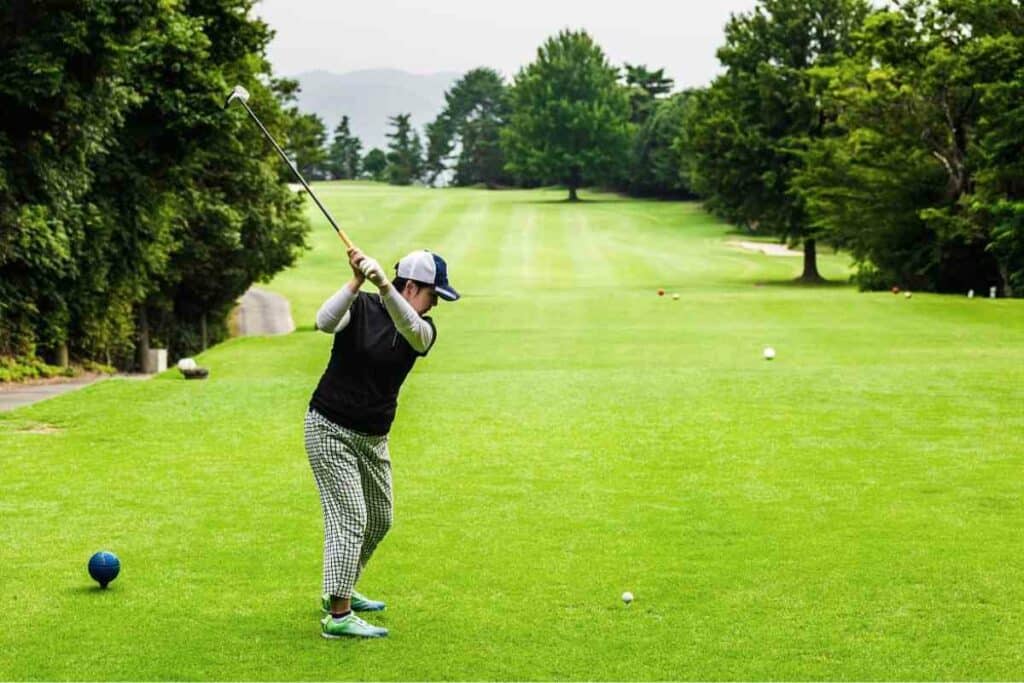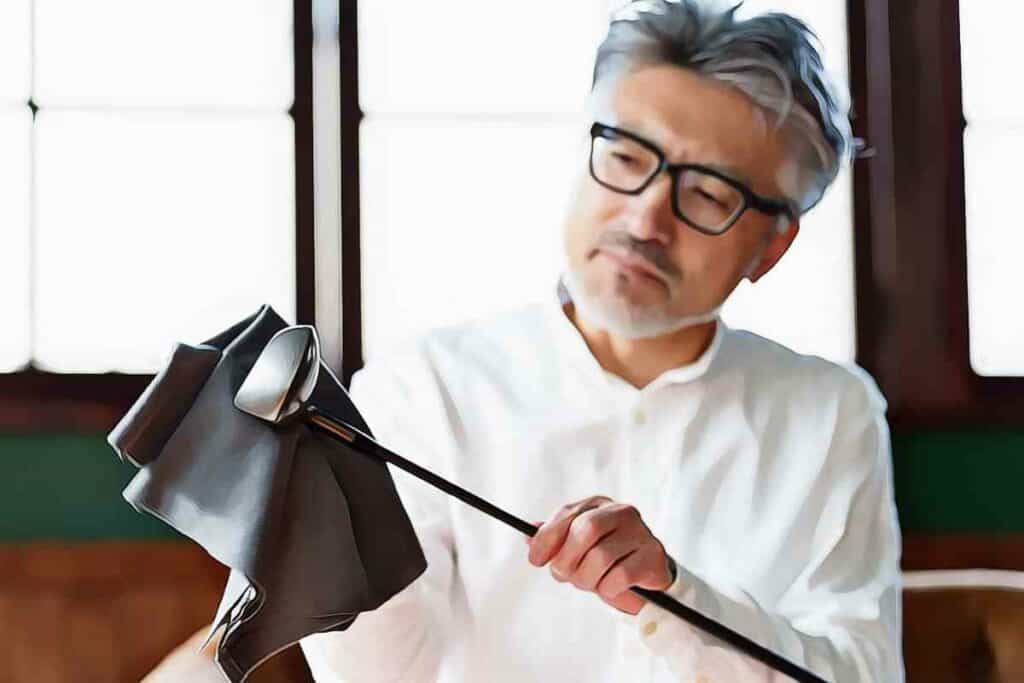Kendo, also referred to as ‘the way of the sword,’ is a Japanese fighting game that resembles fencing.
Unlike other combat sports, it is not discriminatory.
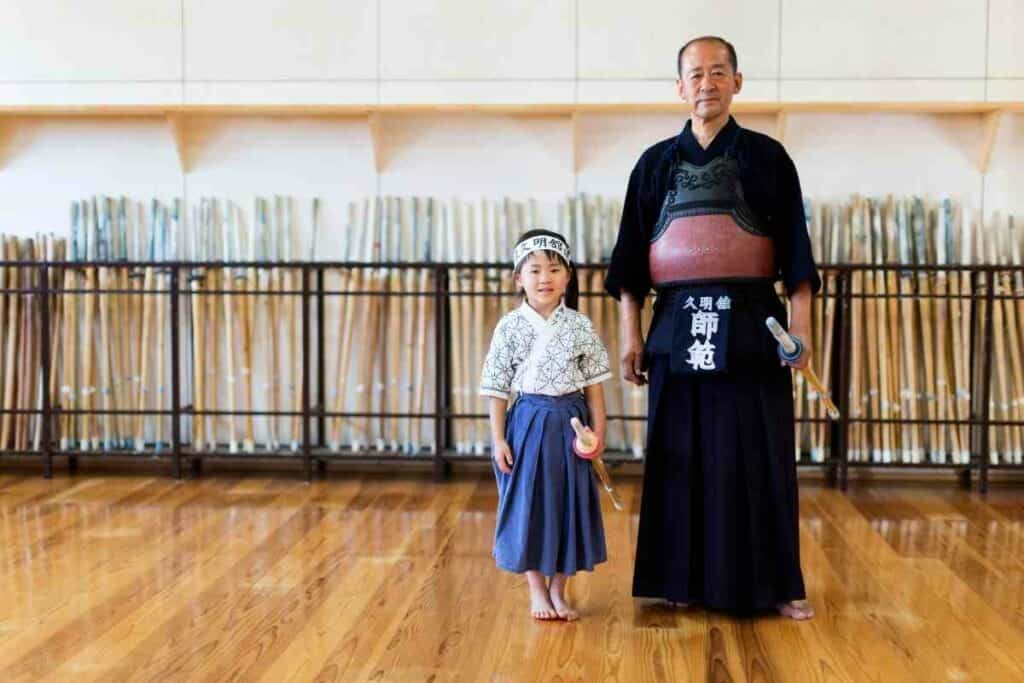
Regardless of their body size, age, gender, and religion, anybody can partake in the sport.
Table of Contents
The History of Kendo
As mentioned above, Kendo is a Japanese combat sport. Earlier on, the game was exclusively practiced by the Samurai.
It wasn’t until the mid-1900s that the game was introduced to the public, intending to cultivate good morals and improve physical wellbeing.
Why Do Kendo Practitioners Use Bamboo Swords and Armour?
During the advent of Kendo, Samurai used wooden swords called bokuto when training.
Unfortunately, these weapons were so dangerous that players often hurt each other.
In some cases, there were fatalities. This prompted the change, resulting in the introduction of bamboo swords.
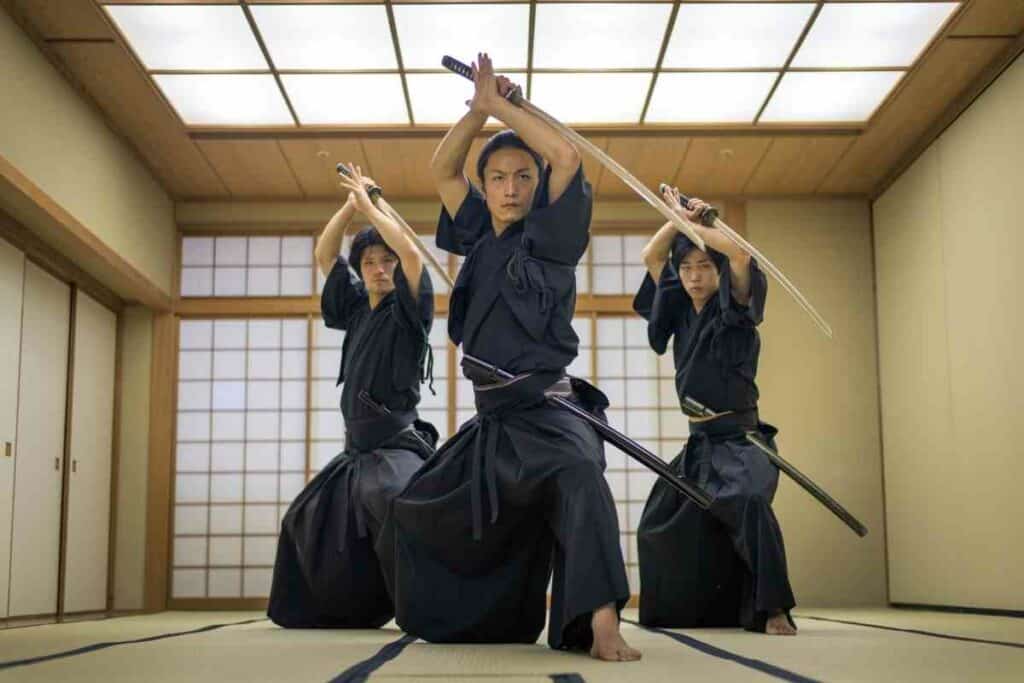
The first bamboo sword, called hikihada, was invented by Kamiizumi Isenokami Nobutsuna in the 16th century.
It was almost similar to the modern sword, the shinai, except it had several pieces and a leather wrapping.
Like bamboo swords, body armor (bogu) was introduced to enhance player safety.
Its introduction resulted in a significant reduction in injuries and deaths during kenjutsu training.
Kenjutsu, the way of drawing the sword, is a training technique used in Kendo and other fighting sports.
What Makes Kendo Unique?
Interestingly, the objective of practicing Kendo isn’t improving your self-defense skills or preparing you for a fight.
You might find this surprising, given that the game originated from the Samurai, the famous Japanese warriors.
Instead – Modern Kendo focuses on improving one’s life morally, physically, and spiritually.
Kendo appears brutal, but it isn’t. The game adheres to the principles of Samurai swordsmanship.
It also aims to improve a player’s character by instilling the principles of the sword (katana). These principles are known as kata.
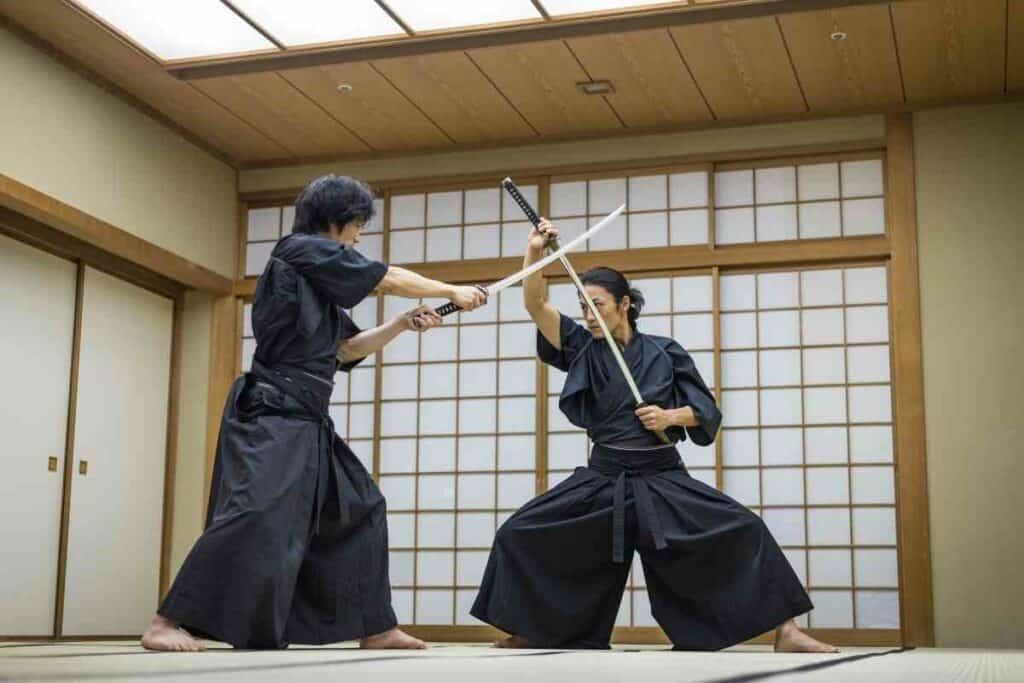
The -do in Kendo signifies that the game prioritizes mental wellness over fighting techniques.
‘Do’ is a way of life that emphasizes self-discipline.
The best way of understanding this is by comparing it to Kenjutsu. In Kenjutsu, the -Jutsu means technique, potentially fatal moves.
How Popular is Kendo?
Over six million people practice Kendo worldwide. Of these, 33% live in Japan.
Other regions with many practitioners include the United States, Korea, and some European countries.
How is Kendo Ranked?
Kendo ranking is based on achievement in grade, level, or rank.
The sport uses the kyu and dan grading system to indicate a player’s proficiency.
There are six kyu grades below the first dan, arranged in reverse order (this means that the sixth kyu is the lowest). The dan levels start at one and end at ten.
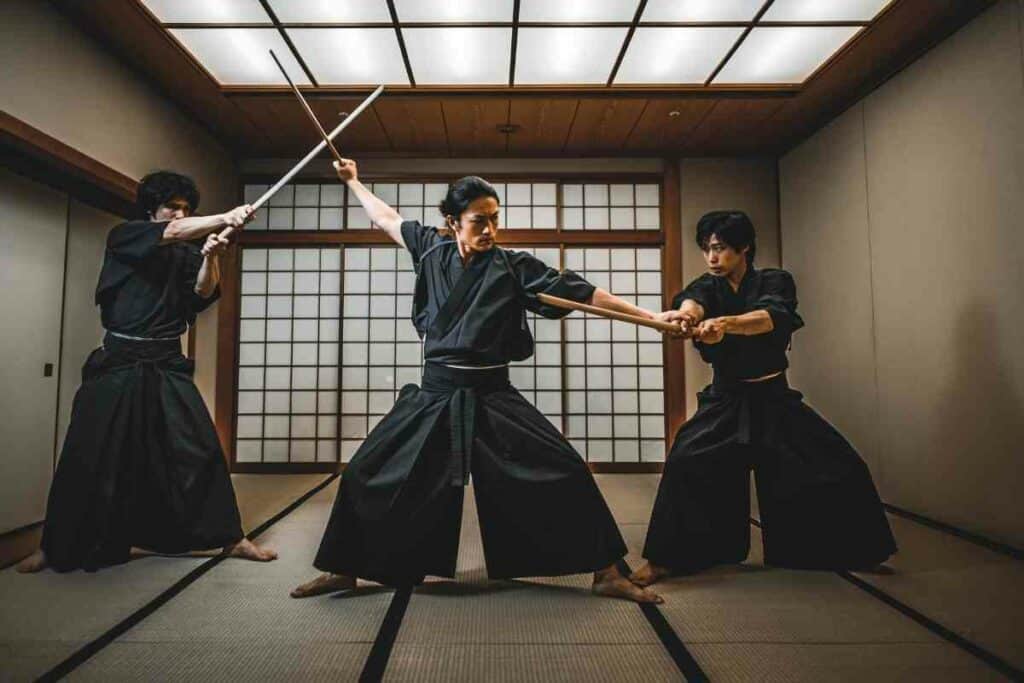
Children make up the majority of Kendōka at kyu grades. Japanese adults usually bypass this stage and take the first dan as their first exam.
However, foreign practitioners must go through every kyu level before enrolling in dan training sessions.
Eighth dan is the highest level that a practitioner can achieve through physical training.
The ninth and tenth levels are no longer awarded, except for players considered by special committees that oversee the game.
Only five people have ever achieved the rank of the 10th dan, and none is alive.
Modern Kendo
Kendo training is noisier than other combat sports and martial arts.
This is because kendōka produces shouts, known as kiai, to express their fighting spirit when hitting the opponent.
The practitioners also stamp their feet after striking, an action known as fumikomi-ashi.
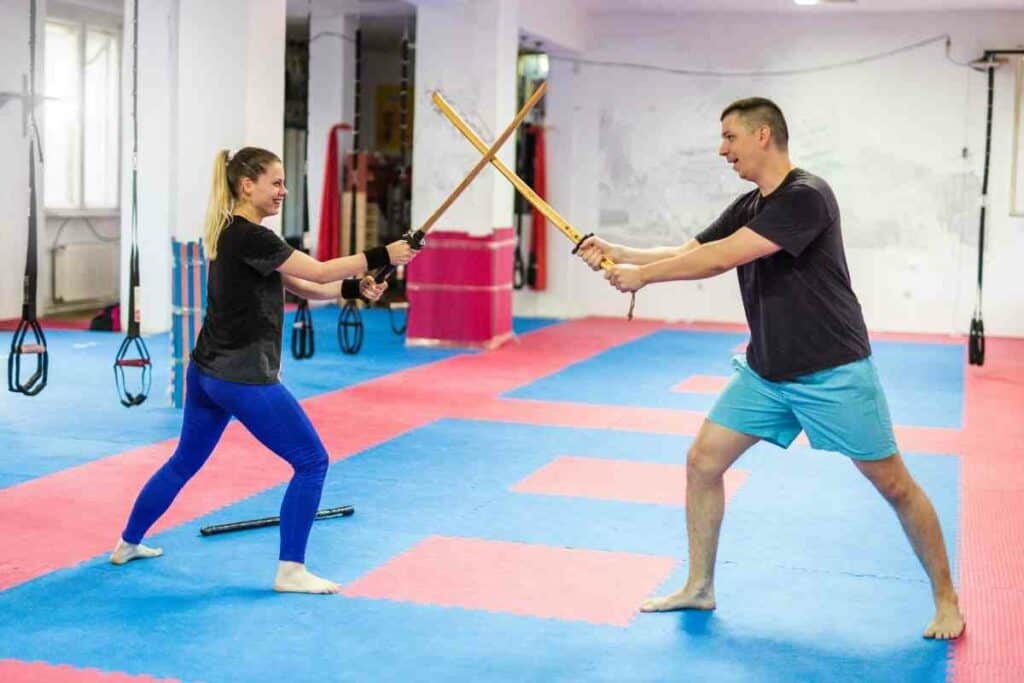
Like other combat sports, players must remove shoes before Kendo training. Ideally, training should be performed in a specially designed dojo.
However, you can also use sports halls and other open areas.
That Said – The floor should be clean and wooden to provide suitable conditions for the execution of fumikomi-ashi.
The two main techniques in Kendo are strikes and thrusts. You can only strike your opponent at protected areas, such as the head, wrists, and torso.
On the Other Hand: Thrusts are only allowed to the throat. Because a thrust can cause a serious injury or death if performed incorrectly, beginners and intermediate kendōka aren’t allowed to perform such moves – only experts can execute them.
Kendo Strategies
The two main strategies in Kendo are shikake-Waza and Oji-waza.
Shikake-waza focuses on initiating attacks, either through a slow build-up or striking boldly when an opponent is unawares.
Contrarily, Oji-waza is a counterattack strategy that involves striking an opponent after avoiding their attack.
Most players who use this strategy start by inducing their opponent to attack, only to hit them by surprise.
Why Should You Start Practicing Kendo?
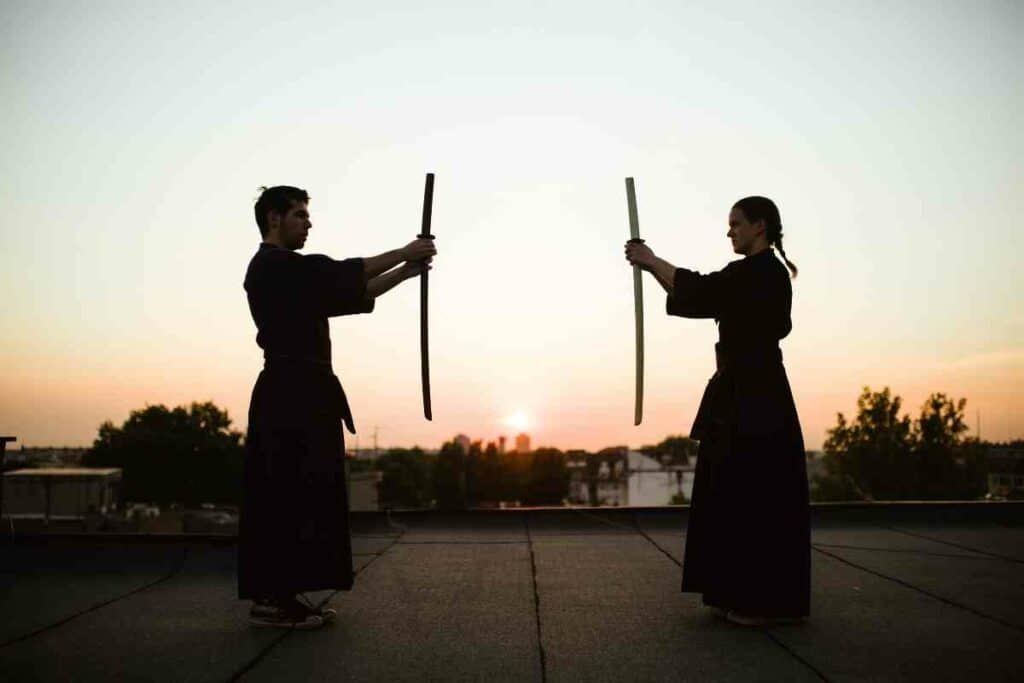
The following are the top benefits of Kendo.
1. It Improves Physical Fitness
Kendo is a fun and exciting way of exercising your muscles.
Beginner classes are simple and primarily focus on safety and injury prevention; the training intensity increases as you expand your skillset.
You might not be fit when you enroll in Kendo practice, but you improve gradually as weeks go by.
Besides, you can accelerate your fitness goals by participating in a home-based Kendo training program.
Here, a trainer prescribes a series of exercises that you’ll practice yourself during your free time.
Remember that physical fitness is vital if you want to be an advanced Kendo practitioner.
2. It Relieves Stress
The hectic nature of modern life leaves many people physically and emotionally exhausted.
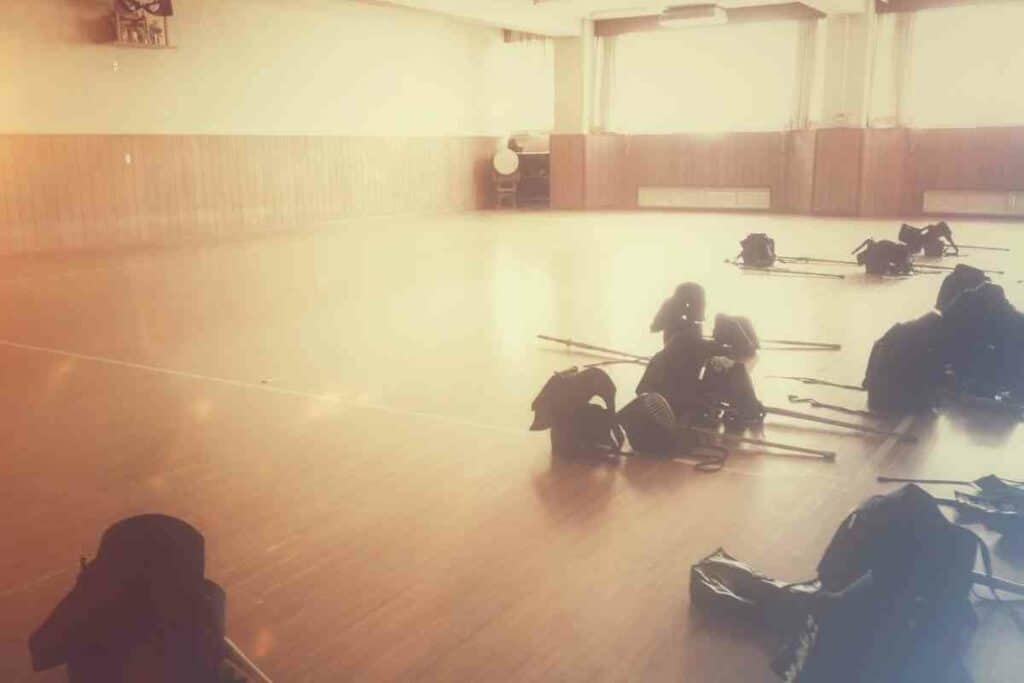
Without engaging in stress-relieving activities, you increase your susceptibility to mental illnesses such as anxiety and depression.
Like yoga and meditation, Kendo is a useful way of relieving stress. As you practice the sport, you build up your spirit.
Your mind focuses on your movements, giving you emotional calm and a reprieve from the troubles experienced in other aspects of life.
3. Personal Development
Kendo fosters personal development by encouraging group training.
During training, players interact with trainers, colleagues, and the community.
These interactions promote critical values such as self-discipline and self-discovery.
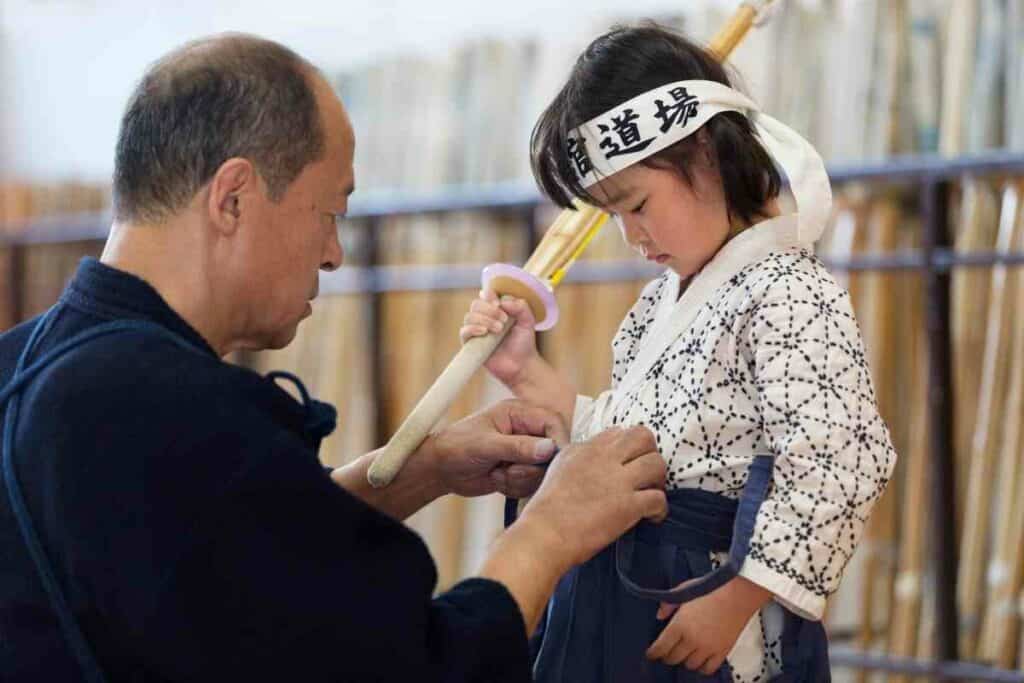
Upon completion of the course, one feels a great sense of accomplishment.
Understanding and caring for others also helps you understand and believe in yourself.
Keep In Mind: The friendship bonds formed when training can positively influence your kids’ future, as they learn how to interact with others from a tender age. As adults, these bonds help broaden your understanding and appreciation for diversity.
4. It Improves Courage
Another benefit of Kendo training is improved courage, even when you’re unlikely to come out on top.
This means that you won’t hold back in situations where the odds are against you.
Because Kendo requires utmost concentration to master the skills, its practitioners develop courage and enthusiasm to see every situation they face.
As such, they are better suited to handling the vicissitudes of daily life.
Is Kendo good for children
Kendo can be a great activity for children, as it provides a variety of physical, mental, and social benefits. Here are some reasons why Kendo can be good for children:
- Physical fitness: Kendo involves a lot of physical activity, including running, jumping, and striking with a bamboo sword. This can help children develop strength, endurance, and coordination.
- Mental focus: Kendo requires a lot of mental focus and concentration, which can help children develop their attention span and improve their ability to focus on tasks.
- Discipline: Kendo emphasizes discipline and respect for oneself and others. Children who practice Kendo learn to follow rules and regulations, as well as develop a sense of responsibility.
- Social skills: Kendo is often practiced in a group setting, which can help children develop their social skills and make new friends.
- Cultural appreciation: Kendo is a traditional Japanese martial art that can help children learn about Japanese culture and history.
However, it’s important to note that Kendo involves the use of weapons and can be dangerous if not practiced safely and under the guidance of a qualified instructor. Parents should do their research and choose a reputable Kendo dojo with experienced instructors.
Wrapping Up
The advantage of Kendo over other combat sports is that it is a lifelong art.
You can start performing in your teens and continue until you’re in your eighties.
Besides improving your physical and mental health, this sport builds character by instilling valuable life skills.
Additionally, Kendo is safer than other martial arts. The body armor ensures that you don’t get injuries while practicing.
Even better, deadly moves such as thrusts are prohibited.
The only injuries you’re likely to experience are blisters since you don’t wear shoes while training.

